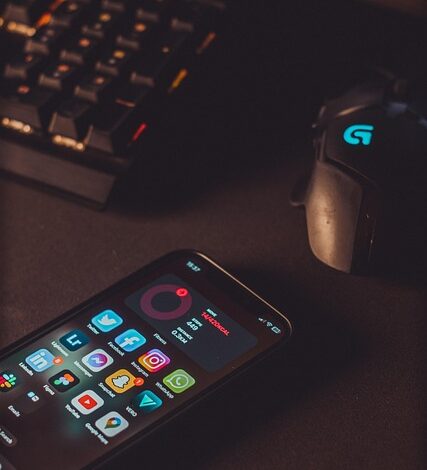Best Fixes for Bluetooth & Wi-Fi Connection Problems

In today’s interconnected world, Bluetooth and Wi-Fi are essential technologies that enable seamless communication between devices. However, like any technology, they can sometimes encounter issues such as dropped connections, slow speeds, or failure to connect altogether. These problems can be frustrating, especially when you’re relying on these connections for work, entertainment, or staying connected with loved ones.
This article provides a comprehensive guide to diagnosing and resolving common Bluetooth and Wi-Fi connection issues. Whether you’re troubleshooting your smartphone, laptop, tablet, or smart home devices, the following fixes will help you restore connectivity quickly and efficiently.
Common Causes of Bluetooth & Wi-Fi Issues
Before diving into solutions, it’s important to understand the root causes of these problems. Here are some common culprits:
1. Interference
- Bluetooth and Wi-Fi operate on radio frequencies, which can be disrupted by other electronic devices (e.g., microwaves, cordless phones) or physical barriers like walls and furniture.
2. Outdated Software or Drivers
- Outdated operating systems, firmware, or device drivers can lead to compatibility issues and poor performance.
3. Network Congestion
- Overloaded Wi-Fi networks with too many connected devices can cause slowdowns or disconnections.
4. Hardware Malfunctions
- Faulty adapters, routers, or antennas may prevent proper connectivity.
5. Incorrect Settings
- Misconfigured network settings, such as incorrect passwords or disabled features, can block connections.
6. Distance from Router or Device
- Both Bluetooth and Wi-Fi signals weaken over distance, leading to unstable connections.
General Troubleshooting Steps
Before implementing specific fixes, try these general troubleshooting steps, which often resolve minor issues:
- Restart Devices: Turn off and restart your phone, laptop, router, or Bluetooth-enabled device.
- Check Power Levels: Ensure your devices have sufficient battery life or are plugged in.
- Toggle Connections: Turn Bluetooth and Wi-Fi off and back on again.
- Forget and Reconnect: Remove saved networks or paired devices and reconnect them.
- Update Firmware/Software: Install the latest updates for your operating system, apps, and hardware.
If these steps don’t solve the problem, proceed to the detailed fixes below.
Fixes for Bluetooth Connection Problems
1. Reset Bluetooth Settings
- On most devices, you can reset Bluetooth settings through the system preferences or settings menu. This clears cached data and resets configurations to default.
2. Unpair and Repair Devices
- Go to your device’s Bluetooth settings, unpair the problematic device, then pair it again. Make sure both devices are discoverable during this process.
3. Move Closer to the Device
- Bluetooth has a limited range (typically up to 30 feet). Moving closer to the connected device can improve signal strength.
4. Disable Conflicting Apps
- Certain apps, especially those using location services or audio streams, can interfere with Bluetooth functionality. Close unnecessary apps and test the connection.
5. Update Bluetooth Drivers
- For laptops and PCs, outdated Bluetooth drivers can cause issues. Update them via the manufacturer’s website or your operating system’s update tool.
6. Switch Off Nearby Interfering Devices
- Devices like wireless headphones, smartwatches, or even baby monitors can create interference. Temporarily turn them off to see if the issue resolves.
7. Perform a Factory Reset
- As a last resort, perform a factory reset on the affected device. Be sure to back up important data beforehand.
Fixes for Wi-Fi Connection Problems
1. Reboot Your Router
- Unplug your router and modem, wait for 30 seconds, then plug them back in. This refreshes the connection and resolves temporary glitches.
2. Check Internet Service Provider (ISP) Status
- Visit your ISP’s website or contact their support team to confirm there are no outages in your area.
3. Change Wi-Fi Channel
- If multiple networks in your vicinity use the same channel, it can lead to congestion. Use a Wi-Fi analyzer app to identify less crowded channels and switch accordingly in your router settings.
4. Adjust Router Placement
- Place your router in a central location, away from walls, metal objects, and appliances that emit electromagnetic waves (e.g., microwaves).
5. Use Ethernet Instead of Wi-Fi
- For critical tasks requiring stable internet, connect directly to the router using an Ethernet cable.
6. Enable WPA3 Encryption
- Older encryption protocols like WEP or WPA2 can compromise security and performance. Upgrade to WPA3 if supported by your router.
7. Clear DNS Cache
- On Windows, open Command Prompt and type
ipconfig /flushdns. On macOS, runsudo dscacheutil -flushcachein Terminal. This clears corrupted DNS entries that might hinder connectivity.
8. Limit Bandwidth-Heavy Applications
- Streaming videos, large downloads, or cloud backups can hog bandwidth. Pause these activities to prioritize essential connections.
9. Upgrade Your Router
- If your router is several years old, consider upgrading to a newer model with better coverage and faster speeds, such as one supporting Wi-Fi 6.
Advanced Solutions
For persistent issues, consider these advanced troubleshooting techniques:
1. Assign Static IP Addresses
- Assigning static IPs to frequently used devices ensures consistent connectivity without DHCP conflicts.
2. Set Up a Mesh Network
- For larger homes or offices, a mesh Wi-Fi system extends coverage across multiple access points, eliminating dead zones.
3. Use Quality of Service (QoS) Settings
- Configure QoS settings on your router to prioritize traffic for specific devices or applications.
4. Replace Faulty Hardware
- If none of the above methods work, your router, adapter, or antenna may need replacement.
Preventive Measures
To minimize future connectivity issues, adopt these proactive practices:
- Regularly Update Firmware: Keep all devices and routers updated with the latest patches and improvements.
- Secure Your Network: Use strong passwords and enable firewalls to protect against unauthorized access.
- Monitor Signal Strength: Periodically check signal quality using diagnostic tools or apps.
- Reduce Clutter Around Routers: Avoid placing routers near thick walls or metallic surfaces.
- Schedule Routine Maintenance: Restart your router weekly and clean its vents to prevent overheating.




